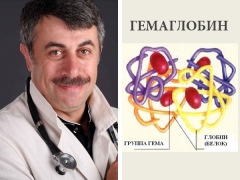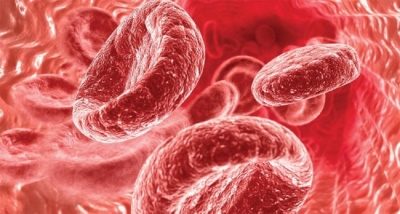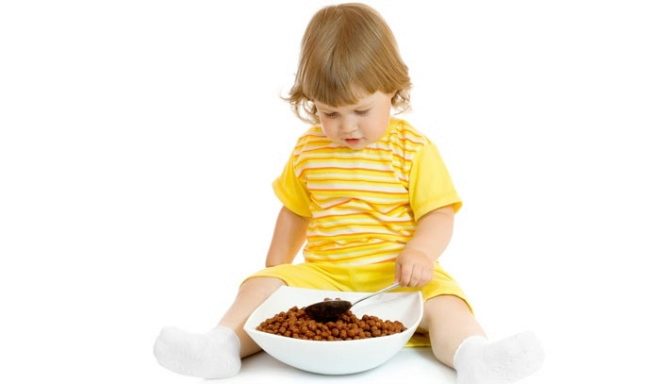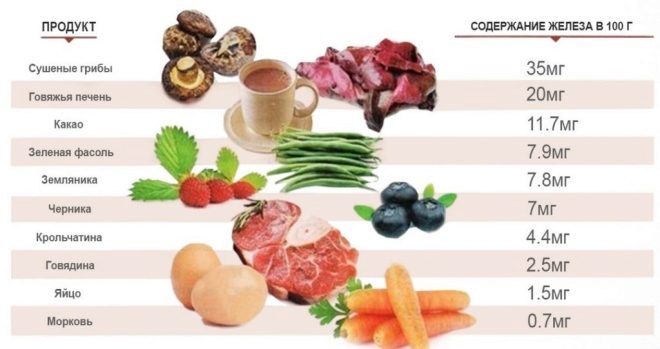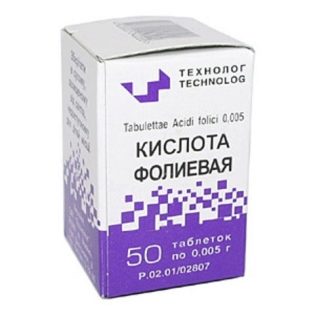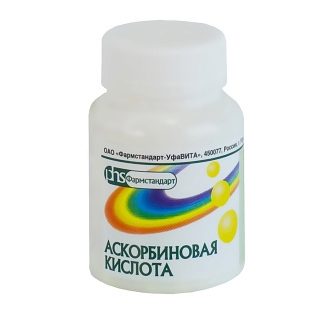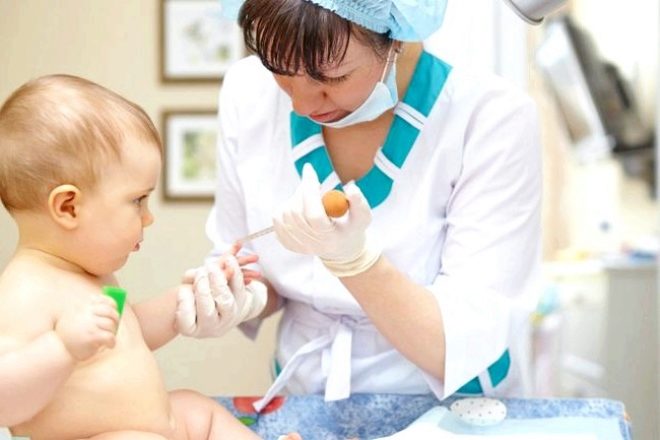Dr. Komarovsky about hemoglobin in children
If a child has lowered hemoglobin level, most often in the clinic of his parents immediately begin to frighten him with diagnoses and possible terrible consequences. Most children, regardless of their age, are prescribed iron supplements. And moms and dads who are far from medical terminology, there are many anxieties and questions. How to raise the level of hemoglobin to the baby and whether it is possible to do without pharmacy medicines at the same time is often explained by the famous pediatrician Yevgeny Komarovsky.
Definition and norm
Hemoglobin is an iron-containing protein that “can” bind with oxygen and transport it to various parts of the human body. If the level of this protein is insufficient, the child will not receive the required amount of oxygen, which is so important for his life and development. This condition is called anemia.
The opinion of Dr. Komarovsky on children's hemoglobin and how to solve problems with low hemoglobin can be seen in the following video.
Normally, hemoglobin values depend on gender and age. In children, these values are more than variable, and they change. However, there are certain control figures on which the doctor will rely, having received the results of a general analysis of the baby’s blood:
- At birth in a baby, hemoglobin values can range from 160 g / l to 240 g / l.
- Starting from 3 months and almost until the year, the level of iron-containing protein decreases gradually and reaches values of 100 - 135 g / l.
- From 1 year to the age of majority, the hemoglobin level will gradually rise, reaching values typical of a man or a woman (representatives of different sexes have different hematological levels).
Reasons for the decline
Evgeny Komarovsky, speaking about the problem of anemia in children, stresses that up to about 5-6 months a child has an ample supply of such an important protein in the body. The crumb makes it even in the period of intrauterine development, however, in the process of the first months of life, iron is consumed and practically does not replenish. That is why all, without exception, children, according to Komarovsky, by 5-6 months there is a decrease in hemoglobin level.
However, in addition to relatively harmless physiological reasons, hemoglobin in a child can be reduced due to other, more dangerous factors:
- Lack of nutrition;
- Blood loss of different etiology;
- Bone marrow diseases;
- Renal failure;
- Neoplasms;
- Vitamin B 12 deficiency;
- Rickets;
- Congenital anemia. If within of pregnancy almost all 9 months, the expectant mother suffered from low hemoglobin levels
Hemoglobin may be excessively high in children with congenital heart defects.
Anyway Evgeny Komarovsky encourages parents to examine the child as closely as possible., make an extended blood count, if necessary, visit a pediatric hematologist. The diagnosis of anemia should be taken seriously.
Tips of Dr. Komarovsky
To the question whether it is possible to do without pharmaceutical preparations in the difficult task of raising the level of low hemoglobin in a child, Komarovsky answers that this is possible. But only on the mildest forms of anemia. If the pediatrician puts on an easy stage, parents can try to improve the performance of the blood test of the offspring by saturating his diet with foods that contain a lot of iron. Naturally, if the age of the baby allows you to eat them.
First of all, it is meat, liver, fish, white poultry meat, cereal cereals, especially buckwheat and beans. From vegetables it is recommended to add more tomatoes and beets, from fruits and berries - pomegranate seeds, strawberries and cranberries and others. Very good hemoglobin caviar raises - red and black.
With caution, Evgeny Olegovich advises giving the child seafood, dried mushrooms and the nuts. Although they increase hemoglobin, they are strong allergens.
Often parents are interested in whether it is possible to increase the level of iron by giving the baby goat milk. The doctor replies that there is no direct connection between this product and the composition of the blood, and notes separately that goat's milk will not be particularly useful for a small child if he is under three years old.
If a 3-month-old baby has a decrease in the level of hemoglobin, and he still does not eat such products due to age, then even at the mild stage of anemia, the baby will need medical treatment. It implies feeding with adapted milk mixtures, which include iron and vitamin B 12, as well as ascorbic acid, which helps the gland to be better absorbed by folic acid.
Komarovsky strongly recommends that you do not choose iron supplements yourself, or relying on reviews on the Internet. Only a doctor on the basis of a blood test will be able to pick up the desired medication and prescribe the necessary dosage. At the same time, he will take into account not only the hemoglobin indices, but also the quality-number of red blood cells, platelets, etc. Yevgeny Olegovich advises to take the prescribed means without fail, strictly observing the frequency and conditions of admission.
The course of treatment, according to Komarovsky, should not be less than 2 months. Sometimes longer therapy is required.
To prevent the development of anemia or to raise the baby hemoglobin in case everything has already happened, Yevgeny Komarovsky recommends that you drive your child more often to the street, provide him with active outdoor games, long walks. Baby's sleep should be longer, not bad if parents can provide the child with gymnastics and massage.
Before reaching the age of one year old, a well-known pediatrician advises in time and correctly introducing complementary foods, not to neglect the expansion of the menu allowed by age.
Very often, in clinics, by the established practice, children with anemia are diverted from the next compulsory vaccination. Evgeny Komarovsky emphasizes that mild anemia should not be the cause of vaccine transfer. Only if the hemoglobin deficiency is serious, and the child is given a severe form of diagnosis, then for 2-3 months the terms of the vaccine can be shifted until the blood counts come to a normal state or come close to normal.
